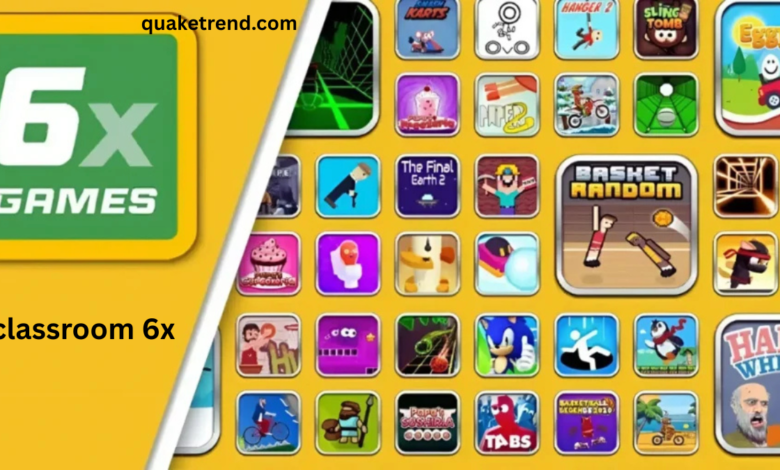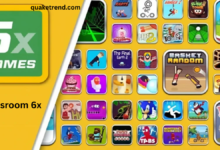Exploring the Concept of “Classroom 6X”: Revolutionizing Education for the 21st Century

In the modern era of education, the dynamics of the classroom are constantly evolving. The traditional classroom setup, with rows of desks facing a chalkboard and a teacher leading the lesson, is quickly becoming a thing of the past. Today’s classrooms are rapidly shifting toward more interactive, collaborative, and dynamic spaces that cater to the diverse needs of students. One such innovation that is gaining traction is the concept of “Classroom 6X”.
“Classroom 6X” is not just another educational buzzword—it’s a philosophy that strives to redefine how education is delivered. The term “6X” signifies the idea of multiplying the educational experience by six key principles that prioritize engagement, technology, flexibility, and inclusivity. With a focus on making learning more relevant and adaptive, Classroom 6X aims to prepare students for a future that requires critical thinking, problem-solving, and collaboration across disciplines.
But what exactly does this new classroom paradigm look like? How can schools implement it, and what benefits does it offer? This article dives deep into the world of Classroom 6X, exploring its core components, advantages, challenges, and the role of technology in transforming education for the better. By the end of this article, you’ll understand the intricacies of Classroom 6X and why it’s the future of education.
The Foundations of Classroom 6X: What Does It Mean?
Before diving into the specifics of how Classroom 6X works, it’s essential to understand its foundational principles. The concept of Classroom 6X revolves around six key pillars, each aimed at enhancing the learning environment. These six principles are flexibility, collaboration, technology integration, engagement, inclusivity, and continuous assessment.
Flexibility: Creating Adaptable Learning Spaces
The traditional classroom setup is rigid. Desks are arranged in rows, facing the teacher, and the layout hardly changes. Classroom 6X turns this idea on its head by emphasizing flexible learning environments. This flexibility can be seen in both the physical space and the curriculum.
In a Classroom 6X environment, furniture is movable, allowing for reconfigurations that suit different teaching and learning styles. Students might be grouped in clusters for collaborative projects or spread out in individual workstations to focus on independent tasks. The physical space is no longer static but dynamic, responding to the needs of the lesson at hand. This adaptability fosters a more engaging atmosphere where students can thrive in settings that are conducive to their learning preferences.
Collaboration: Building Connections Through Teamwork

One of the key aspects of Classroom 6X is the emphasis on collaboration. Gone are the days of isolated desks and individual assignments. In a 6X classroom, teamwork and group projects are integral to the learning process. Students work together on real-world problems, combining their unique skills and perspectives to find solutions.
This collaborative approach not only teaches students how to work with others but also fosters critical social and emotional skills. Collaboration encourages communication, empathy, and conflict resolution—skills that are essential for success in both academic and professional environments. By learning to navigate group dynamics, students gain a deeper understanding of how to collaborate effectively in a team, a skill that will serve them well in their future careers.
Technology Integration: Harnessing Digital Tools for Learning
Technology is no longer a supplementary tool in the classroom; it’s the backbone of Classroom 6X. The integration of technology allows for more personalized learning experiences and a deeper engagement with content. Interactive whiteboards, tablets, and laptops are common in 6X classrooms, enabling students to access resources and engage in interactive activities that enhance their learning.
In addition to providing access to information, technology enables personalized learning paths. Software and applications can track student progress and offer tailored activities based on individual strengths and weaknesses. For example, if a student is struggling with a particular topic, adaptive learning tools can provide additional practice or tutorials to help them catch up. This personalized approach ensures that each student moves at their own pace, fostering a sense of achievement and self-confidence.
The Impact of Classroom 6X on Student Engagement and Motivation
One of the most significant changes that Classroom 6X brings is the shift in how students engage with the material. Traditional classrooms often rely on rote memorization and passive learning, where students are expected to absorb information from the teacher and regurgitate it in tests. However, in a Classroom 6X environment, students are encouraged to actively participate in their own learning process.
Active Learning: A Hands-On Approach to Education
Active learning is at the core of Classroom 6X. This method emphasizes student involvement in the learning process, rather than passively receiving information. In a 6X classroom, students might engage in group discussions, conduct experiments, solve complex problems, or work on creative projects. These activities require them to apply critical thinking, analyze data, and collaborate with their peers—all while deepening their understanding of the subject matter.
Research has shown that active learning significantly enhances student retention and comprehension. When students are directly involved in their education, they are more likely to remember the information and make connections between concepts. Furthermore, active learning fosters a sense of curiosity and excitement about learning, which can increase motivation and engagement.
Motivation Through Relevance: Connecting Learning to Real-World Issues
Another powerful aspect of Classroom 6X is its focus on making learning relevant. In traditional classrooms, students often struggle to see the connection between what they are learning and the real world. Classroom 6X addresses this issue by integrating real-world problems into lessons, encouraging students to apply their knowledge to solve issues that matter to them.
For example, a science lesson on environmental issues might involve a project where students design a sustainable community, considering factors like energy use, waste management, and resource conservation. By tackling real-world challenges, students develop a deeper understanding of the material and recognize its importance beyond the classroom.
This relevance not only boosts motivation but also helps students understand the impact they can have on the world around them. It empowers them to become proactive problem-solvers, which is a crucial skill in today’s rapidly changing society.
The Role of Teachers in the Classroom 6X Model
In the Classroom 6X model, the role of the teacher shifts from that of a lecturer to that of a facilitator and guide. Rather than standing at the front of the classroom delivering information, teachers in a 6X classroom act as mentors, providing guidance, resources, and feedback as students engage with the material.
Guiding Student-Centered Learning
Classroom 6X is centered around student agency, meaning that students are expected to take ownership of their learning. The teacher’s role is to provide the necessary tools, resources, and support to help students succeed, rather than dictating every step of the learning process. This approach requires teachers to develop strong relationships with their students, understanding their individual needs, interests, and learning styles.
Teachers also facilitate collaboration among students, guiding them through group projects, discussions, and problem-solving activities. By creating a supportive and inclusive learning environment, teachers in a Classroom 6X model ensure that all students feel valued and empowered to contribute to the learning process.
Continuous Feedback: A Tool for Growth
Another essential aspect of the Classroom 6X model is the emphasis on continuous feedback. Rather than relying on high-stakes tests to measure student success, teachers provide ongoing assessments that help students understand their progress and areas for improvement. These assessments can take many forms, from quizzes and peer reviews to self-assessments and teacher conferences.
Continuous feedback allows students to adjust their learning strategies and address any gaps in their knowledge before they become significant obstacles. It also fosters a growth mindset, where students view challenges as opportunities for learning rather than as failures. This mindset is essential for fostering resilience and a love of learning.
